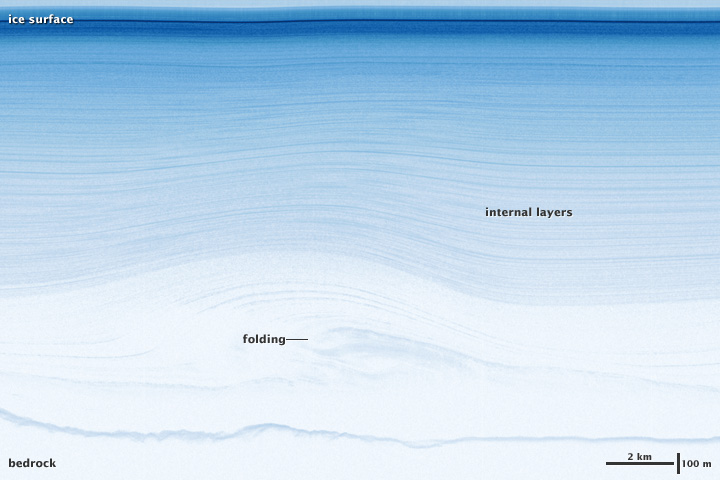

Knowing how much the elevation of the ice sheets has changed is valuable because it tells modelers how ice is evolving. This, in turn, allows them to estimate how much it has contributed to sea level rise. But it’s only part of the calculation.

Although the polar ice sheets are largely flat, the bedrock beneath is often rugged. Radar instruments carried aboard IceBridge flights are designed to map the topography beneath the ice. (Photograph courtesy Michael Studinger, NASA GSFC.)
Nowicki points out a very basic problem when trying to predict sea level rise: “We don’t know the full volume of the Greenland ice sheet or the Antarctic ice sheet. We are lacking a good knowledge of what the bed looks like beneath the ice sheet. And if I don’t know what the bed looks like, I don’t know how much ice there is. IceBridge is going to give us that.”
Each radar instrument mounted on the P-3 bounces radio waves of different wavelengths off the ice. Some penetrate the top layers, while others travel all the way to the ground before reflecting back to receivers on the plane.

The structure of ice sheets over a kilometer thick is revealed by IceBridge’s radar instruments. This image reveals layers and folds in the Greenland Ice Sheet, measured in March 2011. (Image by Jesse Allen and Robert Simmon, using data from the Center for Remote Sensing of Ice Sheets.)
“We get a complete picture of the ice from top to bottom,” says Studinger. “We see how much snow has been deposited on the surface. And we see all the way to the bottom of the ice sheet—three or four kilometers down—to internal layers that formed hundreds of thousands of years ago. That tells us what is happening in the ice sheets and how they flow into the ocean.”
“People have thought about flying something like IceBridge for 30 or 40 years,” says Rignot. “This top-to-bottom view is a game-changer. IceBridge will provide the critical data that we need to improve ice sheet models.”